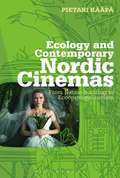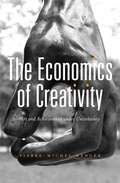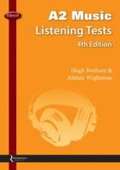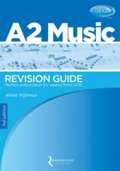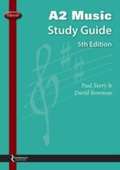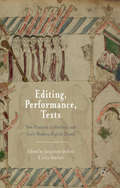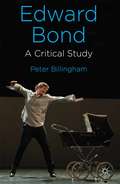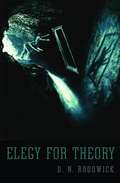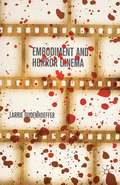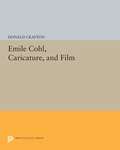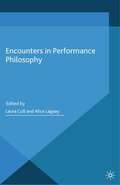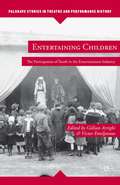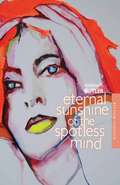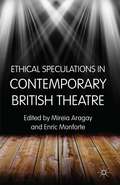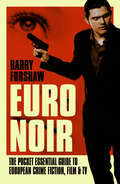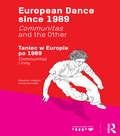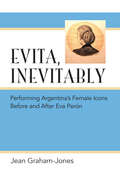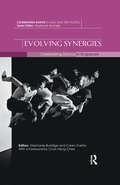- Table View
- List View
Ecology and Contemporary Nordic Cinemas: From Nation-building to Ecocosmopolitanism (Topics and Issues in National Cinema)
by Pietari KääpäEcology and Contemporary Nordic Cinemas uses a range of analytical approaches to interrogate how the traditional socio-political rhetoric of national cinema can be rethought through ecosystemic concerns, by exploring a range of Nordic films as national and transnational, regional and local texts--all with significant global implications. By synergizing transnational theories with ecological approaches, the study considers the planetary implications of nation-based cultural production.
The Economics of Creativity: Art And Achievement Under Uncertainty
by Pierre-Michel MengerCreative work is governed by uncertainty. So how can customers and critics judge merit, when the disparity between superstardom and obscurity hinges on minor gaps in ability? The Economics of Creativity brings clarity to a market widely seen as either irrational or so free of standards that only power and manipulation count.
The Economics of Creativity: Art And Achievement Under Uncertainty
by Pierre-Michel MengerCreative work is governed by uncertainty. So how can customers and critics judge merit, when the disparity between superstardom and obscurity hinges on minor gaps in ability? The Economics of Creativity brings clarity to a market widely seen as either irrational or so free of standards that only power and manipulation count.
Edexcel: A2 Music Listening Tests (4th edition) (PDF)
by Benham, Hugh|Wightman, AlistairThis book contains a series of questions that will help you to prepare fully for Unit 6 (Further Musical Understanding) of your A Level exam. It has been carefully written to match the requirements of the new Edexcel A2 Music specification, relating to the set works that you will study for examination in 2015, 2016 or 2017.
Edexcel: A2 Music Listening Tests (4th edition) (PDF)
by Benham, Hugh|Wightman, AlistairThis book contains a series of questions that will help you to prepare fully for Unit 6 (Further Musical Understanding) of your A Level exam. It has been carefully written to match the requirements of the new Edexcel A2 Music specification, relating to the set works that you will study for examination in 2015, 2016 or 2017.
Edexcel A2 Music Revision Guide (3rd edition) (PDF)
by Alistair WightmanThis revision guide is designed to prepare you fully for Sections B and C of your final A2 Music exam. For exams June 2015 to June 2017, this guide will help you to understand how the exam works, how questions are worded and what your examiners are looking for. It will give you the edge you need to achieve a better grade.
Edexcel A2 Music Study Guide (5th edition) (PDF)
by Paul Terry|David BowmanThis study guide can be used throughout your Edexcel A2 Music course to support your school work, and follows the specification for exams from 2015 to 2017. Written in a clear and approachable style by experienced teachers and examiners, this book will help you to prepare thoroughly for your exam.
Editing, Performance, Texts: New Practices in Medieval and Early Modern English Drama
by Julie Sanders Jacqueline JenkinsThe essays in this volume challenge current 'givens' in medieval and early modern research around periodization and editorial practice. They showcase cutting-edge research practices and approaches in textual editing, and in manuscript and performance studies to produce new ways of reading and working for students and scholars.
Edward Bond: A Critical Study
by P. BillinghamThis new study of one of Britain's greatest modern playwrights represents the first major, extended discussion of Edward Bond's work in over twenty years. The book combines rigorous and stimulating analysis and discussion of Bond's plays and ideas about drama and society. For the first time, there is also discussion of selected plays from his later, post-2000 period, including Innocence and Have I None, alongside explorations of widely studied plays such as Saved.
Elegy for Theory
by D. N. RodowickRhetorically charged debates over theory have divided scholars of the humanities for decades. In Elegy for Theory, D. N. Rodowick steps back from well-rehearsed arguments pro and con to assess why theory has become such a deeply contested concept. Far from lobbying for a return to the "high theory" of the 1970s and 1980s, he calls for a vigorous dialogue on what should constitute a new, ethically inflected philosophy of the humanities. Rodowick develops an ambitiously cross-disciplinary critique of theory as an academic discourse, tracing its historical displacements from ancient concepts of theoria through late modern concepts of the aesthetic and into the twentieth century. The genealogy of theory, he argues, is constituted by two main lines of descent--one that goes back to philosophy and the other rooted instead in the history of positivism and the rise of the empirical sciences. Giving literature, philosophy, and aesthetics their due, Rodowick asserts that the mid-twentieth-century rise of theory within the academy cannot be understood apart from the emergence of cinema and visual studies. To ask the question, "What is cinema?" is to also open up in new ways the broader question of what is art.
Elegy for Theory
by D. N. RodowickRhetorically charged debates over theory have divided scholars of the humanities for decades. In Elegy for Theory, D. N. Rodowick steps back from well-rehearsed arguments pro and con to assess why theory has become such a deeply contested concept. Far from lobbying for a return to the "high theory" of the 1970s and 1980s, he calls for a vigorous dialogue on what should constitute a new, ethically inflected philosophy of the humanities. Rodowick develops an ambitiously cross-disciplinary critique of theory as an academic discourse, tracing its historical displacements from ancient concepts of theoria through late modern concepts of the aesthetic and into the twentieth century. The genealogy of theory, he argues, is constituted by two main lines of descent--one that goes back to philosophy and the other rooted instead in the history of positivism and the rise of the empirical sciences. Giving literature, philosophy, and aesthetics their due, Rodowick asserts that the mid-twentieth-century rise of theory within the academy cannot be understood apart from the emergence of cinema and visual studies. To ask the question, "What is cinema?" is to also open up in new ways the broader question of what is art.
Embodiment and Horror Cinema
by Larrie DudenhoefferUsing the four tissue types (connective, epithelial, nervous, and muscular), Dudenhoeffer expands and complicates the subgenre of "body horror." Changing the emphasis from the contents of the film to the "organicity" of its visual and affective registers, he addresses the application of psychoanalysis, phenomenology, object-ontology, and cyborgism.
Emile Cohl, Caricature, and Film
by Donald CraftonThis is the definitive biography of Emile Cohl (1857-1938), one of the most important pioneers of the art of the animated cartoon and an innovative contributor to popular graphic humor at a critical moment when it changed from traditional caricature to the modern comic strip. This profusely illustrated book provides not only a wealth of information on Cohl's life but also an analysis of his contribution to the development of the animation film in both France and the United States and an interpretation of how the new genre fit into the historical shift from a "primitive" to a "classical" cinema. "Beautiful in look and design, with stunning reproductions from films and newspapers, Emile Cohl, Caricature, and Film offers a biography of a figure who virtually created the European art of animation... In its theory and history, the book is one of the most important contributions to [the field of animated film]. But [it] is central for film study per se, offering a fresh, exciting look at the complicated world of early cinema."--Dana Polan, Film QuarterlyOriginally published in 1990.The Princeton Legacy Library uses the latest print-on-demand technology to again make available previously out-of-print books from the distinguished backlist of Princeton University Press. These editions preserve the original texts of these important books while presenting them in durable paperback and hardcover editions. The goal of the Princeton Legacy Library is to vastly increase access to the rich scholarly heritage found in the thousands of books published by Princeton University Press since its founding in 1905.
Encounters in Performance Philosophy: Theatre, Performativity And The Practice Of Theory (Performance Philosophy)
by Laura Cull Alice LagaayEncounters in Performance Philosophy is a collection of 14 essays by international researchers which demonstrates the vitality of the field of Performance Philosophy. The essays address a wide range of concerns common to performance and philosophy including: the body, language, performativity, mimesis and tragedy.
Entertaining Children: The Participation of Youth in the Entertainment Industry (Palgrave Studies in Theatre and Performance History)
by Gillian Arrighi Victor EmeljanowChildren have been exploited as performers and wooed energetically as consumers throughout history. These essays offer scholarly investigations into the employment and participation of children in the entertainment industry with examples drawn from historical and contemporary contexts.
Eternal Sunshine of the Spotless Mind (BFI Film Classics)
by Andrew ButlerImagine you learn that your lover has had you erased from their memory and, in a moment of despair, you have your lover erased from your memory too. Imagine that as you lose your recollections of the bad times together, you realise that you don't want to forget them after all. That's the premise for Charlie Kaufman's Oscar-winning script for Eternal Sunshine of the Spotless Mind. An instant cult classic, the film's distinctive ambiguity and tangled narrative demands audience engagement and repeated watching. Delving into the central themes of the film, Andrew M. Butler foregrounds its play with genre and audience expectations, its psychoanalytic underpinnings and its debt to Philip K. Dick. Also examining its production processes, Butler explores the against-type casting of Jim Carrey and Kate Winslet in lead roles and the intertwined careers of Kaufman and director Michel Gondry. This special edition features original cover artwork by Patricia Derks.
Ethical Speculations in Contemporary British Theatre
by Mireia Aragay Enric MonforteThis volume is the first to offer a comprehensive critical examination of the intersections between contemporary ethical thought and post-1989 British playwriting. Its coverage of a large number of plays and playwrights, international range of contributors and original argumentation make it a key point of reference for students and researchers.
Euro Noir: The Pocket Essential Guide to European Crime Fiction, Film & TV (Pocket Essential Ser.)
by Barry ForshawEuro Noir examines the astonishing success of European fiction and drama which is often edgier, grittier and more compelling than some of its British or American equivalents, and provides a highly readable guide for those wanting to look further than the obvious choices. Euro Noir provides the perfect shopping list for what to watch or read before that trip to Paris, Rome or Berlin.The invasion of foreign crime fiction, films and TV (not just the Scandinavian variety) has transformed the crime shelves of bookshops and DVD stores. But the sheer volume of new European writers and films is daunting and there is a keen need for a guide to the field. Euro Noir presents a roadmap to the territory and is the perfect travel guide to the genre. From Italy, such influential authors as Andrea Camilleri and Leonardo Sciascia and Mafia crime dramas Romanzo Criminale and Gomorrah, along with the gruesome Gialli crime films. From France and Belgium, important writers from Maigret creator Georges Simenon to today's Fred Vargas, cult television programmes Braquo and Spiral and films, from the classic heist movie Rififi to modern greats such as Hidden, Mesrine and Tell No One. German and Austrian greats such as Jakob Arjouni and Jan Costin Wagner, crime films including Run Lola Run and The Lives of Others. Along with the best crime writing and filmmaking from Spain, Portugal, Greece, Holland and other European countries.'An informative, interesting, accessible and enjoyable guide as Forshaw guides us through the crime output of a dozen nations' - Times'An exhilarating tour of Europe viewed through its crime fiction' - GuardianLook out for the other books in Barry Forshaw's Noir series, Nordic Noir, Brit Noir, American Noir and Historical Noir, and for his latest book, Crime Fiction: A Reader's Guide.
European Dance since 1989: Communitas and the Other
by Joanna SzymajdaThis edited collection charts the development of contemporary dance in Central and Eastern Europe since the literal and symbolic revolutions of 1989. Central Europe and the former Soviet Bloc countries were a major presence in dance – particularly theatrical dance – throughout the twentieth century. With the fragmentation of traditional structures in the final decade of the century came a range of aesthetic and ideological responses from dance practitioners. These ranged from attempts to reform classical ballet to struggles for autonomy from the state, and the nature of each was influenced by a set of contexts and circumstances particular to each country. Each contribution covers the strategies of a different country’s dance practitioners, using a similar structure in order to invite comparisons. In general, they address: Historical context, showing the roots of contemporary dance forms The socio-political climates that influenced emerging companies and forms The relationships between aesthetic exploration and institutional patronage The practitioners who were central to the development of dance in each country A diagnosis of the current state of the art and how it has come about The book’s main through-line is the concept of community, and how all of the different approaches that it documents have in some way engaged with this notion, consciously or otherwise. This can take the form of oppositional relationships, institutional formations, or literally, in identifiable communities of dancers and choreographers.
European Dance since 1989: Communitas and the Other
by Joanna SzymajdaThis edited collection charts the development of contemporary dance in Central and Eastern Europe since the literal and symbolic revolutions of 1989. Central Europe and the former Soviet Bloc countries were a major presence in dance – particularly theatrical dance – throughout the twentieth century. With the fragmentation of traditional structures in the final decade of the century came a range of aesthetic and ideological responses from dance practitioners. These ranged from attempts to reform classical ballet to struggles for autonomy from the state, and the nature of each was influenced by a set of contexts and circumstances particular to each country. Each contribution covers the strategies of a different country’s dance practitioners, using a similar structure in order to invite comparisons. In general, they address: Historical context, showing the roots of contemporary dance forms The socio-political climates that influenced emerging companies and forms The relationships between aesthetic exploration and institutional patronage The practitioners who were central to the development of dance in each country A diagnosis of the current state of the art and how it has come about The book’s main through-line is the concept of community, and how all of the different approaches that it documents have in some way engaged with this notion, consciously or otherwise. This can take the form of oppositional relationships, institutional formations, or literally, in identifiable communities of dancers and choreographers.
European social democracy during the global economic crisis: Renovation or resignation? (PDF)
by David J. Bailey Jean-Michel de Waele Fabien Escalona Mathieu VieiraThis book makes an important contribution to the existing literature on European social democracy in the wake of the 2008 financial crash and ensuing recession. It assesses how social democratic parties have responded, at the national as well as at the European Union level. A wide range of leading political scientists provide the reader with an in-depth understanding of the prospects for social democracy in the midst of an unprecedented crisis for neoliberalism. The book draws together some of the most well-known and prestigious scholars of social democracy and social democratic parties, along with a number of impressive new scholars in the field, to present a compelling and up to date analysis of social democratic fortunes in the contemporary period. It benefits from an analysis of social democratic parties’ experiences in 6 different countries – the UK, Sweden, Germany, France, Spain and Greece – along with a number of chapters on the fate of social democracy in the institutions of the EU.
European social democracy during the global economic crisis: Renovation or resignation?
by David J. Bailey Jean-Michel de Waele Fabien Escalona Mathieu VieiraThis book makes an important contribution to the existing literature on European social democracy in the wake of the 2008 financial crash and ensuing recession. It assesses how social democratic parties have responded, at the national as well as at the European Union level. A wide range of leading political scientists provide the reader with an in-depth understanding of the prospects for social democracy in the midst of an unprecedented crisis for neoliberalism. The book draws together some of the most well-known and prestigious scholars of social democracy and social democratic parties, along with a number of impressive new scholars in the field, to present a compelling and up to date analysis of social democratic fortunes in the contemporary period. It benefits from an analysis of social democratic parties’ experiences in 6 different countries – the UK, Sweden, Germany, France, Spain and Greece – along with a number of chapters on the fate of social democracy in the institutions of the EU.
Evita, Inevitably: Performing Argentina's Female Icons Before and After Eva Perón
by Jean Graham-JonesEvita, Inevitably sheds new light on the history and culture of Argentina by examining the performances and reception of the country’s most iconic female figures, in particular, Eva Perón, who rose from poverty to become a powerful international figure. The book links the Evita legend to a broader pattern of female iconicity from the mid-nineteenth century onward, reading Evita against the performances of other female icons: Camila O’Gorman, executed by firing squad over her affair with a Jesuit priest; Difunta Correa, a devotional figure who has achieved near-sainthood; cumbia-pop performer Gilda; the country’s patron saint, the Virgin of Luján; and finally, Argentina’s president, Cristina Fernández de Kirchner. Employing the tools of discursive, visual, and performance analysis, Jean Graham-Jones studies theatrical performance, literature, film, folklore, Catholic iconography, and Internet culture to document the ways in which these “femicons” have been staged.
Evolving Synergies: Celebrating Dance in Singapore (Celebrating Dance in Asia and the Pacific)
by Stephanie Burridge Caren CariñoA comprehensive overview of the dance culture of Singapore, this book embodies storytelling, personal reflections, memories, and histories of the artists. The extensive calendar of events encompassing companies and soloists from diverse dance practices, such as Indian, Malay and Chinese and a variety of Western contemporary dances, underline Singapore as a vibrant player in the evolution of Asian culture.
Evolving Synergies: Celebrating Dance in Singapore (Celebrating Dance in Asia and the Pacific)
by Stephanie Burridge Caren CariñoA comprehensive overview of the dance culture of Singapore, this book embodies storytelling, personal reflections, memories, and histories of the artists. The extensive calendar of events encompassing companies and soloists from diverse dance practices, such as Indian, Malay and Chinese and a variety of Western contemporary dances, underline Singapore as a vibrant player in the evolution of Asian culture.
